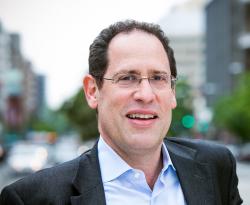Executive Summary
Hurricane Katrina’s assault on New Orleans’ most vulnerable residents and neighborhoods has reinvigorated a dialogue on race and class in America. This paper argues that the conversation should focus special attention on alleviating concentrated urban poverty—the segregation of poor families into extremely distressed neighborhoods.
- Overall, nearly 50,000 poor New Orleanians lived in neighborhoods where the poverty rate exceeded 40 percent. New Orleans ranked second among the nation’s 50 largest cities on the degree to which its poor families, mostly African American, were clustered in extremely poor neighborhoods like the Lower Ninth Ward. In these places, the average household earned barely more than $20,000 annually, only one in twelve adults held a college degree, four in five children were raised in single-parent families, and four in ten working-age adults—many of them disabled—were not connected to the labor force.
Areas of concentrated poverty are not confined to New Orleans. Despite improvements in the 1990s, nearly every major American city still contains a collection of extremely poor, racially segregated neighborhoods. In cities as diverse as Cleveland, New York, Atlanta, and Los Angeles, more than 30 percent of poor blacks live in areas of severe social and economic distress.
These neighborhoods did not appear by accident. They emerged in part due to decades of policies that confined poor households, especially poor black ones, to these economically isolated areas. The federal government concentrated public housing in segregated inner-city neighborhoods, subsidized metropolitan sprawl, and failed to create affordable housing for low-income families and minorities in rapidly developing suburbs, cutting them off from decent housing, educational, and economic opportunities.
A large body of research has demonstrated that concentrated poverty exacts multiple costs on individuals and society. These costs come in the form of: reduced private-sector investment and local job opportunities; increased prices for the poor; higher levels of crime; negative impacts on mental and physical health; low-quality neighborhood schools; and heavy burdens on local governments that induce out-migration of middle-class households. Together, these factors combine to limit the life chances and quality of life available to residents of high-poverty neighborhoods.
With a set of smart policy tools and a booming economy, progress was made in the 1990s towards reducing concentrated poverty in America. Yet recent federal actions, such as the gutting of the highly successful HOPE VI program, reductions in funding and flexibility for the Housing Choice Voucher program, and proposed cuts to the Earned Income Tax Credit, threaten to reduce mobility for low-income families and erase the advances made in the 1990s.
Congress should consider several policy options to put the nation back on track towards alleviating concentrated poverty, by supporting choice and opportunity for lower-income residents in distressed neighborhoods. Options include: restoring funding to the HOPE VI program; increasing support for housing vouchers; piloting a “housing-to-school” voucher initiative; adopting President Bush’s proposed homeownership tax credit; targeting affordable housing to low-poverty areas with the assistance of regional housing corporations; and expanding the EITC to help working families afford housing in better neighborhoods.
Though these policies alone cannot erase the gaps between rich and poor in America, creating more neighborhoods of choice and connection would offer millions of low-income Americans—especially children—a true chance at social and economic mobility.
The Brookings Institution is committed to quality, independence, and impact.
We are supported by a diverse array of funders. In line with our values and policies, each Brookings publication represents the sole views of its author(s).



